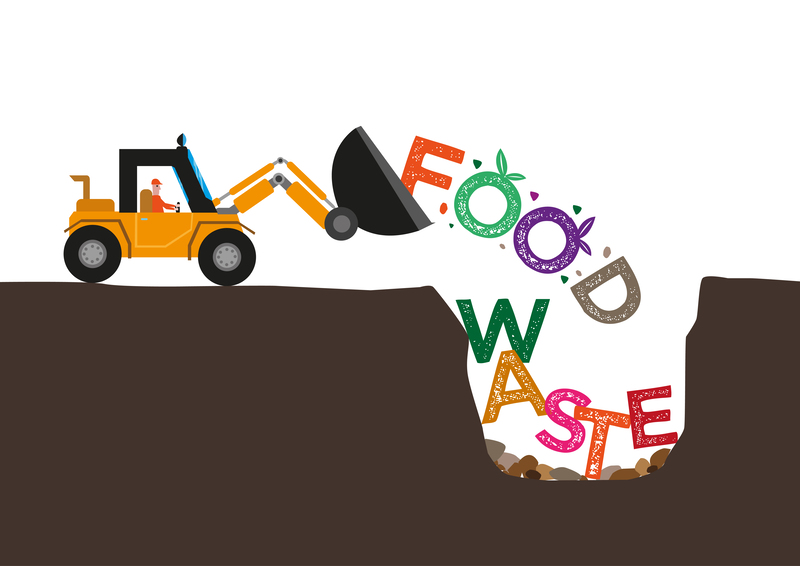How to Educate Others About Proper PPE Waste Management
The increased use of Personal Protective Equipment (PPE) has made proper PPE waste management a crucial public health and environmental concern. Discarded masks, gloves, gowns, and face shields can be found littering city streets, parks, and even waterways, posing challenges for both communities and the environment. However, with well-planned educational initiatives, individuals and organizations can learn safe, sustainable practices for disposing of PPE waste.
This comprehensive guide explores effective strategies and actionable steps for educating others about proper PPE waste management. You'll find useful tips and resources to help teach your staff, students, or community members how to handle PPE waste responsibly, helping to lessen environmental impact and prevent the spread of diseases.
Understanding the Importance of PPE Waste Management
What is PPE Waste?
PPE waste refers to discarded items such as face masks, gloves, face shields, goggles, and gowns that are used to prevent the transmission of infectious diseases and protect users from hazards. These items, especially during health crises like the COVID-19 pandemic, have become everyday essentials, but also major contributors to global waste streams.
Why is Proper Disposal of PPE Waste Critical?
- Public Health Protection: Used PPE can harbor viruses and bacteria, contributing to the spread of disease if not disposed of correctly.
- Environmental Impact: PPE items are often made of plastic materials that do not decompose easily, leading to soil, water, and marine pollution.
- Wildlife Threat: Wildlife can ingest or become entangled in discarded PPE, causing injury or death.
- Waste Management Systems Overload: The sheer volume of PPE waste can overwhelm local waste management systems if not handled properly.

Key Strategies for PPE Waste Management Education
Proper PPE waste management education is essential for everyone, including healthcare workers, businesses, schools, and the general public. The following strategies can be adapted for any audience or setting.
1. Raise Awareness About PPE Waste Issues
- Highlight the Risks: Use infographics and videos to show how improper PPE disposal spreads contaminants and adds to environmental pollution.
- Share Real-Life Consequences: Present case studies or news articles illustrating the ecological and health impact of PPE litter.
- Use Social Media Campaigns: Leverage platforms such as Facebook, Twitter, and LinkedIn to reach a broader audience with facts, tips, and shareable content.
2. Provide Clear Guidelines and Instructions
People are more likely to follow proper PPE disposal procedures if they know exactly what to do. Develop and distribute concise, step-by-step instructions:
- Create Posters and Flyers: Use visuals and simple language for offices, hospitals, schools, and public spaces.
- Distribute Digital Resources: Email guides and infographics or publish them on organizational websites and bulletin boards.
3. Demonstrate Safe PPE Waste Handling Practices
- Host Training Sessions: Conduct workshops or webinars demonstrating how to remove, store, and dispose of used PPE safely.
- Produce Video Tutorials: Short, engaging videos showing real examples can be especially effective for both children and adults.
4. Encourage Participation and Engagement
Active involvement makes educational efforts more memorable. Encourage people to take part in community cleanups or school projects centered on environmentally responsible behavior.
- Organize PPE Waste Collection Drives: Partner with local agencies to collect used PPE for safe disposal.
- Offer Incentives: Recognize and reward organizations or individuals for exemplary behavior in PPE waste management.
5. Collaborate With Local Authorities
Work closely with health departments, environmental agencies, and waste management companies to disseminate trustworthy information and organize safe disposal events.
- Set Up Designated PPE Collection Bins: Place clearly labeled bins in high-traffic areas such as malls, office buildings, and public transportation hubs.
- Publish Official Guidelines Together: Jointly release best practices to ensure message consistency and authority.
Best Practices to Teach for PPE Waste Disposal
When educating others, ensure that these essential practices are understood and followed:
- Segregate PPE Waste: Collect disposable masks, gloves, and other PPE separately from regular trash to minimize contamination risk.
- Do Not Recycle Contaminated PPE: Used PPE should not be placed in recycling bins as it may spread pathogens and compromise recycling streams.
- Use Designated Disposal Points: Follow local guidelines regarding special bins or bags meant for medical or biohazardous waste.
- Wash Hands After Disposal: Always wash or sanitize hands thoroughly after handling or discarding PPE waste.
Customizing PPE Waste Management Education for Different Audiences
For Schools and Educational Institutions
- Integrate Lessons Into the Curriculum: Make PPE waste management a part of health, science, or environmental studies.
- Use Storytelling: Engage students with interactive stories or games about the journey of a discarded mask or glove.
- Peer-led Campaigns: Encourage students to create posters, host talks, and spread awareness among classmates.
For Workplaces and Organizations
- Include in Safety Protocols: Make PPE waste disposal part of regular safety training and protocols.
- Provide Accessible Bins: Ensure that employees have easy access to designated PPE waste bins in break rooms, entrances, and other key locations.
- Monitor Compliance: Assign team members to regularly check proper disposal and reinforce training as needed.
For Healthcare Settings
- Regular Training Updates: Keep staff informed on updated protocols for infectious waste handling and disposal.
- Clearly Label Collection Points: All receptacles for PPE waste should be visibly labeled as "infectious/biomedical"
- Audit Processes: Review and improve disposal processes based on feedback from staff and waste management teams.
For the General Public and Communities
- Public Service Announcements: Distribute messages through local media, community centers, public transit, and social platforms.
- Community Workshops: Host engaging sessions to teach households the importance and steps of proper PPE disposal.
- Volunteer Programs: Involve residents in local efforts to monitor and maintain cleanliness in public areas.
Utilizing Media and Technology For Effective PPE Waste Management Awareness
Digital Resources
- Infographics & Shareable Posts: Visual content is highly effective for educating and reminding people of correct procedures.
- Short Educational Videos: Platforms like YouTube and TikTok can demonstrate quick tips on PPE disposal, reaching millions.
- Interactive Apps: Apps can offer guidance, quizzes, and location-based notifications for nearest disposal sites.
- Email Campaigns: Send regular updates and best practices to subscriber lists or organizational newsletters.
Traditional Media
- Posters and Banners: Place in public areas, hospitals, schools, and workplaces.
- Radio Spots and TV Ads: These can reach a broader and less tech-savvy audience.
- Newspaper Articles: Write informative pieces for local publications.
Overcoming Common Challenges in PPE Waste Management Education
Despite growing awareness, some obstacles can hinder effective PPE waste management. Here are some solutions:
- Combatting Misinformation: Ensure all educational materials are up-to-date, accurate, and vetted by health/environmental authorities.
- Addressing Language Barriers: Develop resources in multiple languages to cater to diverse populations.
- Dealing With Perceived Inconvenience: Emphasize how easy and fast proper disposal can be, especially with accessible bins and clear signage.
- Handling Lack of Infrastructure: Advocate for better public resources and collaborate with local authorities to place disposal options where they're most needed.
Innovations and Future Directions in PPE Waste Management Education
- Biodegradable PPE: Inform others about advances in eco-friendly alternatives such as compostable masks and gloves.
- PPE Recycling Initiatives: Highlight new pilot projects and technologies that can safely recycle certain types of PPE, and teach how community members can participate.
- Smart Disposal Bins: Share information on sensors and IoT-enabled bins that notify authorities when full or monitor improper use.
- Gamification: Use reward systems, challenges, and digital badges to motivate people to learn and participate in proper PPE waste practices.
Useful Tips for Sustainable PPE Waste Management Education
- Update Educational Materials Frequently to reflect changing guidelines, newly available PPE types, or recycling methods.
- Engage Local Champions within neighborhoods, schools, and organizations to act as role models and spread the word.
- Partner With Environmental NGOs and health organizations for access to resources, funding, and broader campaigns.
- Use Data and Feedback to measure baselines and track improvements in PPE disposal behavior, modifying methods as needed.
Conclusion: Creating a Culture of Responsible PPE Waste Management
Proper PPE waste management education is an ongoing process that requires the commitment of individuals, communities, businesses, and local governments. By combining clear information, practical tools, and active engagement, we can protect our health and the planet while navigating present and future health challenges.
Whether you're a teacher, business owner, healthcare manager, or concerned citizen, your role in educating others about PPE waste disposal matters. As global PPE use continues, so does our responsibility to teach, model, and advocate for sustainable and sanitary waste practices.

Frequently Asked Questions About PPE Waste Management Education
1. What is the best method for disposing of personal protective equipment waste?
Best practices include: Collecting used PPE in a dedicated trash bag, sealing it tightly, and placing it in bins labeled for non-recyclable or hazardous waste where available. Always wash hands thoroughly afterward.
2. Can PPE be recycled?
Most single-use PPE, especially if contaminated, should NOT be recycled due to infection risk and material incompatibility. Consult local guidelines for specific recycling initiatives for clean, unused PPE.
3. How can I encourage my community to adopt better PPE waste management habits?
Provide educational sessions, distribute easy-to-follow materials, and set up convenient disposal points. Public recognition and rewards can also help drive participation and compliance.
Resources for Further Learning
- World Health Organization - Guidelines on Covid-19 Waste
- CDC - Proper Waste Disposal
- US Environmental Protection Agency - PPE Waste Management
- UN Environment Programme - PPE Waste in the Environment
Let's work together to make proper PPE waste management a natural part of our daily lives for a healthier, cleaner world.
